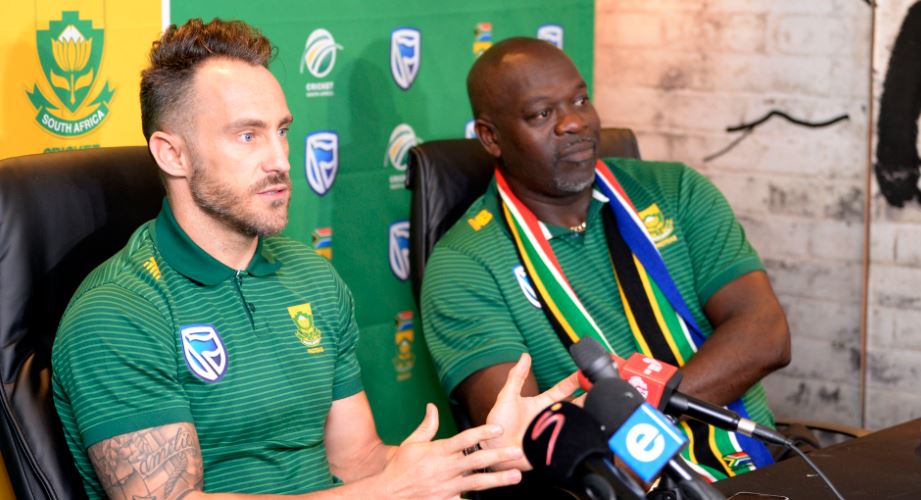The Proteas limped out of World Cup contention with two round-robin matches remaining. SA Cricket magazine columnist HD Ackerman offers his version of the way forward.
Now that the dust is settling on the weakest campaign in South Africa’s Cricket World Cup history I’m not going to tip-toe on eggshells around the subject. As a country we need to look one another in the eye and come to terms with what happened – and most importantly, how to fix things.
The next year is going to be a huge one for Cricket South Africa (CSA) – the organisation more so than the players. For too long people haven’t been able to say it like it is because of fear of repercussions from cricket’s governing bodies.
A prime example is West Indian great Michael Holding being ‘warned’ about criticising poor umpiring during a commentary stint at the World Cup. It was a veiled threat that if he didn’t ‘tone down’ his on-air comments he might be removed from the commentary teams.
One can see that a similar approach exists with Cricket South Africa and SuperSport, who have the monopoly
on coverage of the South African game. There’s a fear among commentators about being ‘too critical’ – perhaps a better word is honest – and they’re afraid that if they are harsh all sorts of draconian measures will be put in place, including seeing them removed from the commentary team.
Often I have questioned whether I should tone down my thoughts and have been ‘fearful’ of repercussions should I be too critical. I’ve looked inward and the World Cup campaign was the last straw. We have to face things and have a mature discussion.
I’ve previously said how close to my heart South African cricket is, and I’m a South African through and through. My passport is green and even though I live in Perth, that doesn’t make me any less South African. I want South African cricket to be the strongest in the world and we can get there, but we need to be brutally honest.
CSA faces a huge year ahead – and they can take their cue from Cricket Australia (CA). It was only last year that Australian cricket was the pariah of the world, with the ‘Sandpapergate’ disgrace resulting in David Warner, Steve Smith and Cameron Bancroft being banned. But CA addressed the crisis head-on and turned things around within a year. That’s what CSA has to do.
Sure, we can talk about the World Cup and how poor some of captain Faf du Plessis’ decision-making was.
Three examples: In the opening match against England at The Oval, he won the toss and elected to bowl in seamer-friendly conditions. He threw the ball to spinner Imran Tahir who took the wicket of Jonny Bairstow second ball. ‘Genius,’ people said. ‘Innovative, inspired.’ I call nonsense on that. If I were Kagiso Rabada and my captain gave the new ball to a spinner I would have been fuming. The white ball doesn’t stay hard or move around for long in England. Use it while you can, at 10:30 in the morning. England went on to score 311 and won by 104 runs.
Next game, Du Plessis won the toss and elected to send Bangladesh in on a used strip, meaning South Africa would bat second and be at the mercy of the Bangladesh spinners. Bangladesh scored 330 and South Africa could only manage 309 in reply. It was a terrible decision by Du Plessis.
For the third game, against India at the Rose Bowl, Aiden Markram, who had made the ground his home in the buildup to the World Cup, was left out of the XI. Du Plessis again won the toss and decided to bat first. Now, South Africa have Ottis Gibson, Dale Benkenstein and Claude Henderson as part of their coaching team. All three have extensive experience of playing county cricket in England and Gibson was previously the England bowling coach.
They will know that the rule there is ‘don’t look down, look up’ when assessing conditions, because of the weather. On a mizzly morning they let India have a bowl and had Hashim Amla and Quinton de Kock back in the hut within six overs.
South Africa didn’t choke at this World Cup. They were plainly not good enough. And the hard questions must be asked. Are our domestic structures strong and good enough? Why has CSA been fighting with the SA Cricketers’ Association and how can things work? Are there not some hardened former internationals – I’m thinking of Graeme Smith, Shaun Pollock and Mark Boucher – who can be brought in to help remedy the situation? Have we got good coaches? How does South Africa retain its best talent, with the rand having to compete against Kolpak and the T20 leagues that have mushroomed around the globe? What can we do to make sure a player arrives ‘fresh’ for international duty and not fatigued from playing in a money-spinning T20 tournament?
These are questions that need proper and definitive answers.
There was so much wrong with South Africa at the World Cup. Du Plessis might be a good leader, but he was saying the wrong things, telling the media ‘it wouldn’t be the end of the world’ if the Proteas didn’t win and ‘it’s only a game of cricket’. The public doesn’t want to hear that – they want to be told how much intent there is. They want to support winners and teams that are determined to win.
When the captains were asked before the tournament which player from another country they’d pick for their side, it was revealing that England’s Eoin Morgan said he wouldn’t choose anyone else because there was no one better than his players. That’s what the public wants to hear.
It’s as if players and media in South Africa are fearful of challenging the system and structures. Generic articles are published and hard questions and constructive criticism aren’t offered.
It’s said that if you always do what you always did, you’ll always get what you always got. South African cricket is going backwards and CSA needs to adopt a dramatically different approach if it is to change things for the better.
And there is no better time to change than the present.
Photo: Gallo Images







